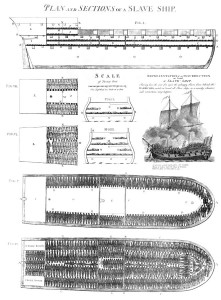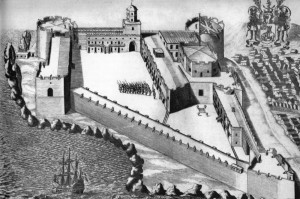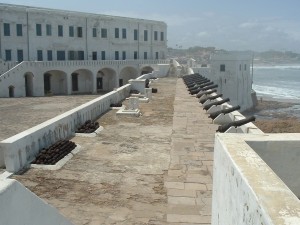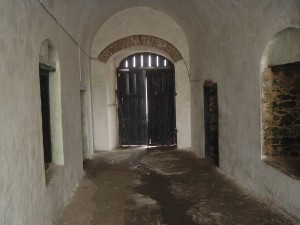This event is being held in conjunction with the Saskatchewan African Canadian Heritage Museum’s Bicentennial Celebration Banquet celebrating 200 years since the abolition of slavery. Image illustrating how slaves were stowed upon slave ships and including a slave revolt aboard a slaver. Images such as this became important pieces of propaganda within the abolitionist movement. An illustrated lecture by Ty M. Reese (Associate Professor of History, University of North Dakota) “From Luxuries to Dependency: Abolition, Conquest and the Foundations of Gold Coast Imperialism” Date: Friday, 8 February 2008 Time: 3:30 pm Place: Language Institute Theatre, LI 215 All are welcome Refreshments will be provided Free parking in ‘M’ area of Lot 2 For the poster for this event, click here. Cape Coast Castle, with the town of Cape Coast, or Oguaa, outside of it in the late 17th century when it was controlled by England’s Royal African Company. From England’s arrival on the Gold Coast in the mid seventeenth century until 1807, English slavers and Fante middlemen maintained a mutually beneficial relationship in which the Fante, through their control of the coastal slave trade, held the upper hand. This position allowed the Fante to control and benefit from the various luxury items being imported into the Gold Coast through the slave trade’s sorting system and it was their control over these commodities that provided their coastal power. One side of Cape Coast Castle with the guns pointing out to sea. In the 17th and 18th centuries the guns’ range was not enough to reach any vessel attacking the castle. In 1807 this changed with first the Asante conquest of Fante and then with England’s decision to abolish its slave trade. These two events undermined Fante’s coastal position and, through their continued desire for luxury goods, made them increasingly dependent upon England until, in 1874, it established its Gold Coast colony. The reversal of roles caused by abolition and conquest played a vital role in redefining coastal relations and in doing so laid the foundations for England’s Gold Coast imperialism. Ty M. Reese is an associate professor of history at the University of North Dakota. As the department’s Atlantic World historian, he teaches classes on African, Atlantic, Early American and World history. His current research involves a monograph project, Sortings and Slaves: Trade and Interaction at Cape Coast, 1750-1821, that examines the consequences of cross-cultural interaction and trade upon the peoples of one Gold Coast enclave. Through this work he seeks to revise our understanding of the consequences of the slave trade upon West Africa by narrowing the focus from large coastal regions to smaller defined regions, or enclaves, and by examining the slave trade within an import rather then export function. His next project involves examining Fante-English interaction on the Gold Coast from 1664 to 1874. Cape Coast Castle’s ‘Door of No Return’ situated near the castle’s female slave dungeons which were holding cells for slaves awaiting embarkation. The doors opened onto the beach where waiting canoes carried the slaves out to the slave ships anchored on Cape Coast road. This event is sponsored by the Department of History, the Faculty of Arts, the Saskatchewan African Canadian Heritage Museum, and the HRI.
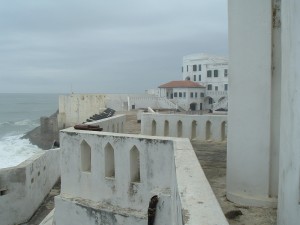 View of Cape Coast Castle looking out to sea. Gives good insight into the rough nature of the surf.
View of Cape Coast Castle looking out to sea. Gives good insight into the rough nature of the surf.
The Abolition of the Atlantic Slave Trade: A Bicentennial Commemoration was last modified: March 7th, 2017 by
Categories:

